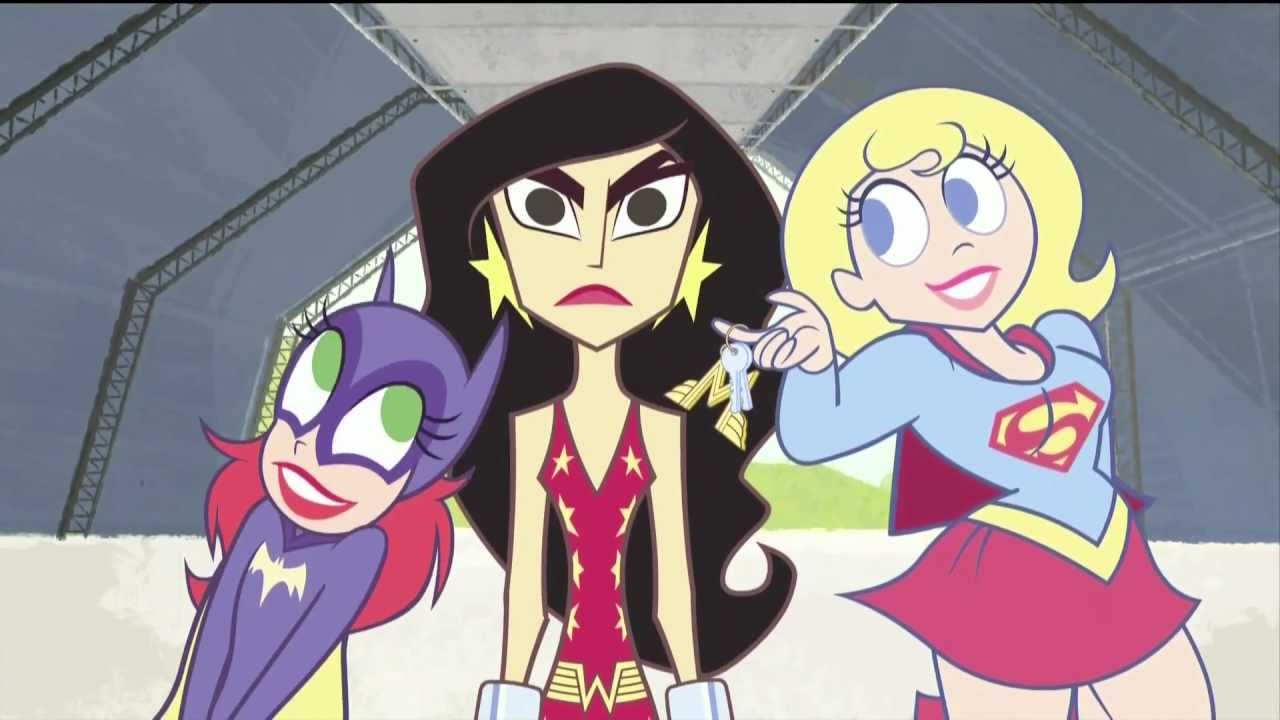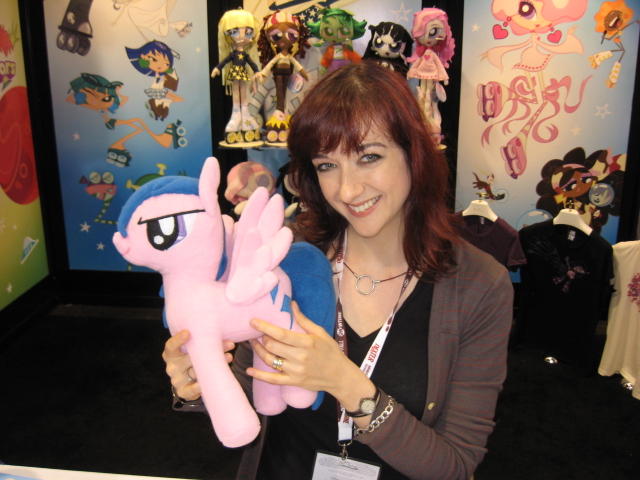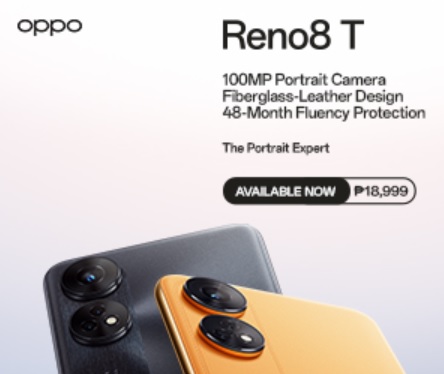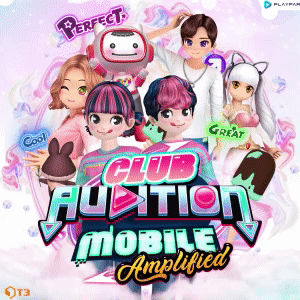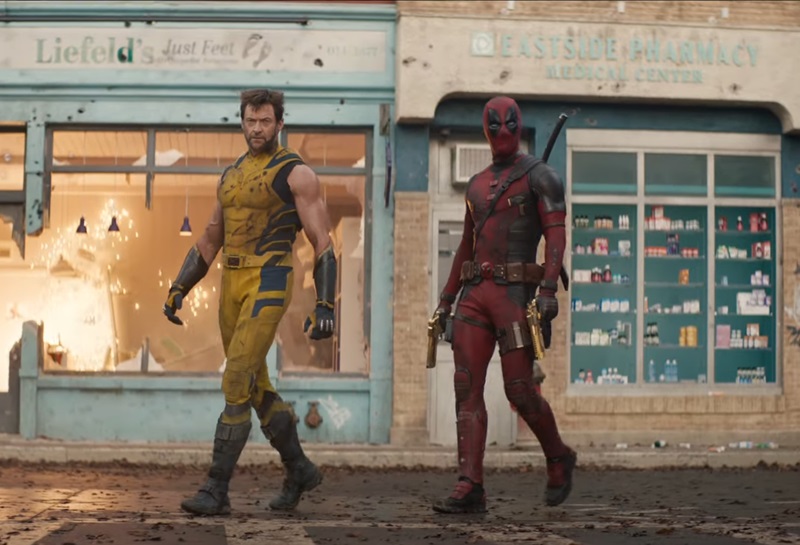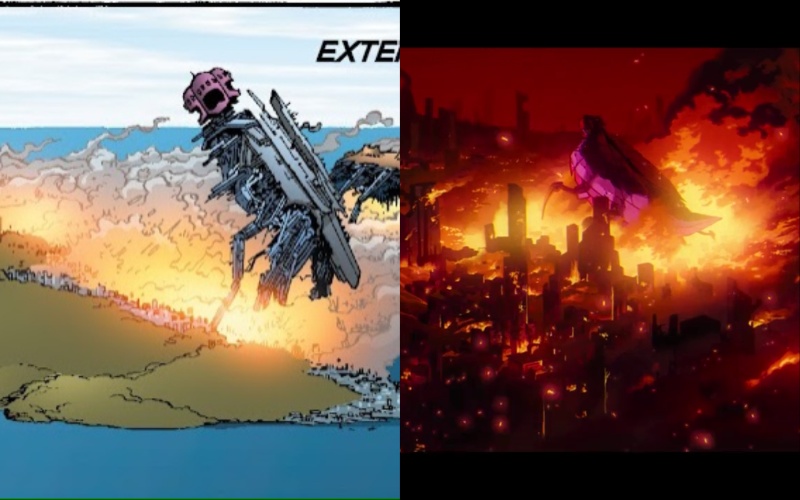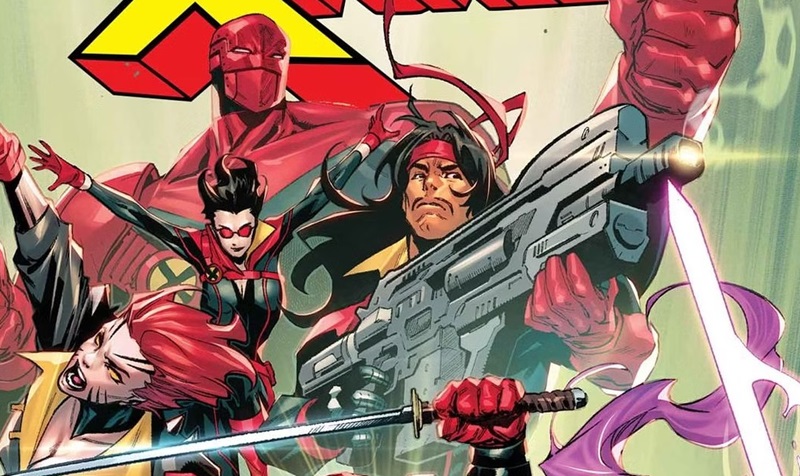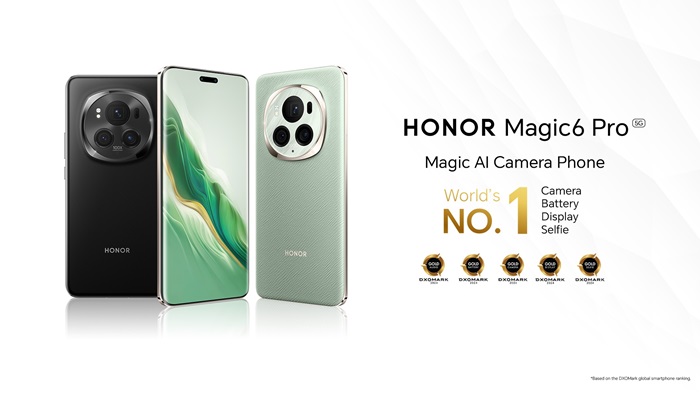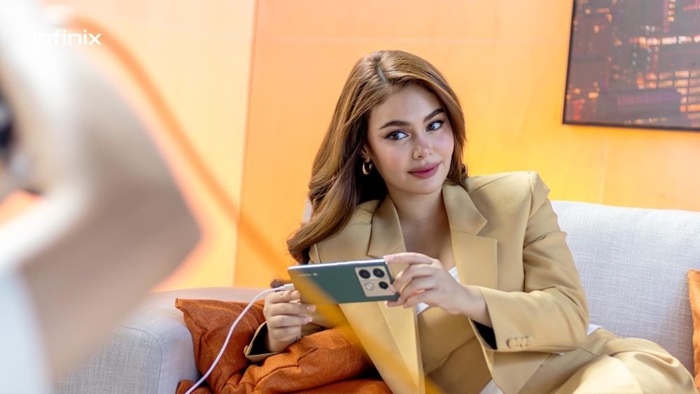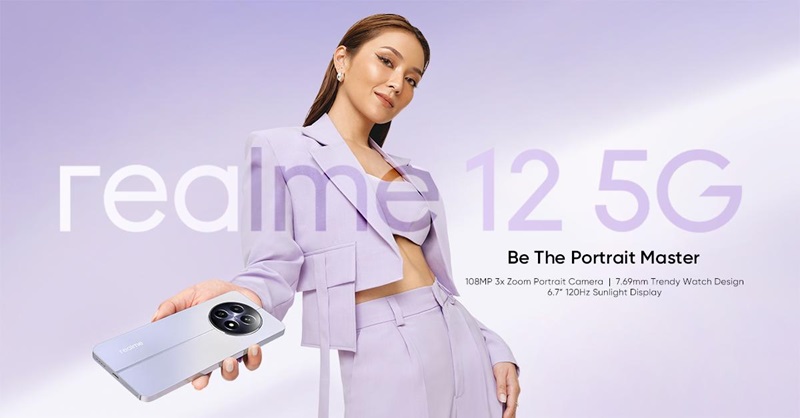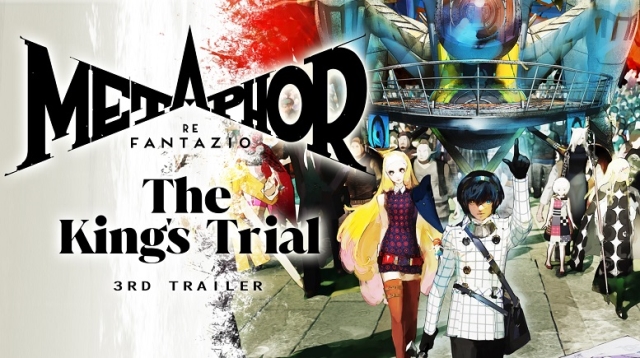Q&A with Lauren Faust, Executive Producer/Director/Writer of DC Super Hero Girls on Cartoon Network
Lauren Faust is an Emmy-award winning animator and writer. She is the creator of the animated series My Little Pony: Friendship is Magic, and has also worked as an animator on Cartoon Network series The Powerpuff Girls and Foster’s Home for Imaginary Friends.
Could you tell us a bit about how DC Super Hero Girls was born and how you came up with the idea for the show?
It started back in 2011. Warner Bros. and DC were partnering with Cartoon Network to make a series of shorts for Cartoon Network called DC Nation.
They were reaching out to artists across the animation industry to see if there were any superheroes left or lesser-known superheroes – basically not Batman or Superman – that they wanted to tell some stories with. I immediately jumped on the idea of pitching an idea of teenage superheroes.
I then produced these five shorts called Super Best Friends Forever which featured Supergirl, Batgirl and Wonder Girl (not Wonder Woman). Warner Bros. and DC were happy with them and actually asked me to develop Super Best Friends Forever as a TV show, so I worked on that for a few months, but we just couldn’t find a home for it on any of the networks at the time, so I moved on to do other things.
In the meantime, after a few years, DC and Warner Bros. wanted to launch these doll lines with these characters and created a web series to go with it and that was the first DC Super Hero Girls.
And from what I understand the doll line did really well, but the web series wasn’t reaching as much of an audience as they had hoped. Remembering Super Best Friends Forever and the work I did on it, they reached out to me to do a reboot of the property as a television show rather than just a web-based series of shorts so it was all just sort of born out of that.
This initial excitement that I had on the opportunity to tell the story of teenage superheroes sort of grew over the years, ultimately culminating into the DC Super Hero Girls that I am making now.
One thing that I love to say is that there are lots of stories told about teenage superheroes in comics and on TV, but most of the time what you will see is that the stories are about the plot. Who is the bad guy? What is he doing? And what do we have to do to stop him and save the world? Then they show what teenagers would do in that superhero situation, how they would work in that superhero situation.
In our show, we kind of do the opposite.
We start from being a teenager, so we think about specific teenage situations – dealing with school, dealing with friends, dealing with family, dealing with just life in general – after school jobs, getting your driving license, dealing with brothers and sisters, and then we put the superhero spin on the teenage situation. The show is about growing up, being a teenager and just looking at those experiences through a superhero lens.
What was the biggest challenge in transferring the idea of Super Best Friends Forever into a newer generation of kids and teenagers, and making it fit into DC’s field?
From a creative standpoint, I am very lucky to say that there weren’t a whole lot of challenges. Because I had already developed Super Best Friends Forever, I already had a base. In fact, the personalities and incarnations of Wonder Woman, Supergirl and Batgirl, I just carried over from Super Best Friends Forever to DC Super Hero Girls.
Warner Bros. and DC had been really wonderful to me in offering me a lot of creative freedom, so I didn’t have a lot of check boxes to check off and I didn’t have a lot of limitations in front of me creatively, so I just sort of let my imagination run wild and to my delight everyone was on board with it and accepted it.
I think the biggest challenge at first was really creating character designs that worked for the tone and sensibilities of how I wanted the show to feel. I wanted to try my best in making them conducive to TV and animation, but then I also had to find a design style that suited the consumer products division and create designs that would also make good dolls. That in itself was a challenge just to find the right style that suited the needs of both the show and the toy line across the board.
What makes DC Super Hero Girls different from other series about superheroes?
The big difference between our show, I think, and other superhero shows is that we focus more on what the teenage experience is and how the girls feel about classic coming-of-age stories about growing up, but then we take a superhero spin on it which I think sets us apart. I think we are also set apart a little bit as our show has a lot of comedy in it and more classic cartoony sensibilities.
We have loads of action, our characters definitely fight and get down and dirty, but we take more of a light-hearted spin on it and bring a lot of humour to the situation, and a lot of classic cartooning that you don’t always see in action shows.
Some of our artists and our storytellers are better at the comedy and some of them are better at the action and depending on which story that we want to tell that story might get assigned to different people so that we can express both sides of that kind of storytelling.
What was the process of finding your core audience? Did you decide the core audience for the show at the start or was it something which was developed later on?
I think one of the reasons Warner Bros. and DC came to me is because my sensibilities in the way I tell stories already attracts a core audience. I don’t really sit down and say “these are the people that I want to talk to”.
I sit down and I say “what do I want to say”. That just happens to attract young girls, but also with shows like My Little Pony and The Powerpuff Girls behind me, I’ve seen that if you tell the stories in a compelling and interesting way. So, you will get boys to watch the shows and you will get adults to watch – even though on the surface it seems like the show is only meant for little girls.
I’m a big believer in “all ages” entertainment. While our core audience is going to be girls 6-11, I know that there are going to be older girls who like it, I know that there are going to be boys who like it and I know that there are going to be comic fans who like it. I really try to tell these stories beyond our core audience, so that anyone who decides to turn it on will hopefully enjoy it as well.
The characters are super fun. Where did you get the inspiration to create the personalities and the design of these characters?
There are so many places. I like to start with the characters themselves. Supergirl, Wonder Woman and Batgirl, in particular, are so iconic and everyone is so familiar with them. I wanted to take something that was known about these characters that spoke to them, their core personalities and fill them out from there. But then I also wanted to find what I like to say is the teenage reflection of who that character is.
Wonder Woman is the ultimate warrior. She is trained, she is an Amazon, she is brilliant and the teenage reflection of that is the valedictorian – the girl at school who gets perfect grades, she’s in all the AP classes, she’s a star athlete, she’s really popular and she is popular because she is nice to everybody and she deserves to be popular, she’s genuinely liked. But we also found the teenage reflection in her – she can be a little bit of a fish out of water and have a hard time fitting in because she did not grow up in the world of man, so girls can relate to that as well.
The teenage reflection of my version of Supergirl is the rebel. I really tried to enter the idea of Supergirl’s origin story, that she was a little girl on Krypton and Superman, Kal-El, was just a little baby and they both got sent to Earth but Kal-El landed first so by the time Supergirl landed on Earth, Superman was already grown up. So, even though she has the same powers as he does, everybody knows him but not her. How would a teenager feel about that? It’s just like having an older brother or sister who gets all the attention, and nobody notices you.
Batgirl’s teenage reflection is being a fan girl. She is Batgirl because she is a fan of Batman, she collects all his comics and all of his action figures and she buys all her clothes at the Batman section of the store in the mall, and then other characters’ like Bumblebee we made the shy girl, Jessica Cruz, Green Lantern is the activist, Zatanna is the drama geek, the girl who is in drama class and she’s all about performance and appearances. So that was the place that I started from – who are they as superheroes and how can I embellish certain aspects of that to make them relatable teenage characters.
Can you talk about topics that the characters experience in this show?
I feel like there are certain aspects of being a teenager that are universal. We have a lot of women on our story crew on this show so just by nature being women and having been teenage girls, we are able to bring in our own experiences and memories of being teenagers to the stories that we tell here. And I trust that those experiences and feelings are still relevant to girls today, and of course, we look around us and see what teenagers are dealing with that we didn’t deal with.
I certainly didn’t deal with social media when I was fifteen, it just wasn’t around so we are able to look around us and see what girls are dealing with these days and then apply our own memories of how we felt and how we acted when we were teenagers to those new ideas. But then there are other things that are universal that aren’t necessarily changed by what kids are going through today.
We are doing an episode of how Wonder Woman is just trying to get her driving license and how I had to get my driving license is not necessarily any different than teenagers would be getting theirs today.
Characters such as Wonder Woman have become more well-known outside of comics fans over the years. Does outside knowledge of the characters play any role in writing for the show and is it easier or harder nowadays to write for Wonder Woman because she is so well-known from the movie?
I can’t say that it made it any harder. I think one thing that the people who made the movie and what I am doing that I think might be similar is an initial love of the character and a desire to be true to who she is in the comics.
This is a character, Wonder Woman in particular, who has existed for generations so there are a lot of source material to pick from. But I didn’t want to change Wonder Woman, I kind of wanted to put a spin on her and even though I wasn’t specifically trying to make her like the movie – in fact I developed the show before the movie even came out – it was like a beautiful surprise to see that there were some similarities anyway.
So, for me, I just take the approach of what I believe is right for this character in this show because she is a teenager in our show. It is just a happy accident that some of the ideas and themes line up. It’s exciting.
Are there any characters from the comics that you would like to introduce in future seasons of the show?
Oh yes, there are so many characters in the DC Universe. It is really hard to pick which ones you want to show first. So as the series goes on you are going to see more and more characters getting introduced. We have a whole line up of male superheroes, a whole line up of female villains. We have one shot character that will show up for one episode, at least one episode for now, that we explore. But it is always going back to trying to find that teenage theme, the teenage reflection.
As the series goes on you are going to see portrayals of Harley Quinn, Catwoman has already been on there, Livewire, Poison Ivy, a lot of the boys. You are going to see the Flash, you are going to see Steve Trevor, Green Arrow. Then you are going to have villains like Destro that we are bringing into the mix that we are going to try to find a teenage angle or a teenage situation when these characters face these villains and kind of give as many characters as we can, what I call an age demotion – where any characters who’s an adult becomes the teenager, and any character who is a teenager becomes the child, and we are trying to wash that across the board with any characters we address as much as possible.
What is the best thing about telling your stories in just eleven minutes?
I like telling big stories and it is a challenge to tell a meaningful story in a short amount of time. In working on doing so I think the show developed a bit of a style that came out of trying to tell these stories as fast as we can and figuring out filmmaking tricks to get ideas across as quickly, and simply, and clearly as possible. And in doing so it helped form what the style of the show is that it might not have been if we were telling longer versions of the stories. In a way I think that is a really big positive and it helps the show feel a little different than other superhero shows that are out there.
What was your introduction to comic books, sci-fi and all that other ‘geeky stuff’?
I started when I was very little. My first exposure to DC was with the Wonder Woman live action show starring Lynda Carter which had a very big effect on me. I was very little; I think maybe around 4 or 5 perhaps and loved the show. Comic books were always kind of around in my family. My mother used to buy me a lot of Archie comics and more than anything my older brother, Jason, was an avid comic collector and I used to sneak into his room and take his comic books out, read them, and sneak back in to put them away so that he was none the wiser.
Even though I think people thought that it was only for boys, and to be honest I’m not sure growing up that I knew a lot of other girls that liked comic books, I really gravitated to the characters especially if there were any superhero teams that involved female characters.
Why is it important to visualise the role of female superheroes both in animation and in movies with real characters?
I think the importance is that girls have been just as interested and inspired by superheroes as boys for a very, very long time, but we didn’t have a lot of opportunities to see ourselves reflected in there.
You know usually a superhero team is a whole bunch of boys and a girl, and she is usually just kind of a stereotype of what the male writers who created these shows think that girls like or how girls act. It is really important to appeal to girls’ desire to be heroes, to be responsible, to save the day, to feel strong and reflect that back for them in characters that they feel like they can relate to and characters who are like them.
Was it hard convincing the studios in creating a show that would normally be found in a boy targeted show, but was now aimed towards girls?
There has been a very interesting thing happening in comics in the last several years that more and more girls have been interested in them and all the comic companies seem to have taken notice.
So, we see more and more comics that are geared towards girls with more female characters and perhaps storylines that one might say girls are more interested in. In that sense it actually wasn’t too hard to pitch. Warner Bros. and DC actually approached me to see if I was interested in rebooting their DC Super Hero Girls show and it took a little time, but it wasn’t too hard to get them to embrace my ideas. But I also have a history behind me.
I used to work on The Powerpuff Girls with my husband, Craig McCracken, over 15 years ago which I think sort of broke a bit of a glass ceiling in terms of portraying female superheroes and being a part of that I think gave the people that I was pitching to some confidence in my ideas as well.
I can easily say that 10 years ago people were saying that girls didn’t even like animation or didn’t like cartoons outside of princess movies, so that shift in the last several years has been very apparent and a nice change of pace.
How did you deal with gender stereotypes?
What is interesting about superheroes through the ages is that usually there is a team of male superheroes and there is one girl who has to embody all of girldom somehow, so getting to create characters where so many of them are girls we get to really explore different aspects of that so these characters don’t fall back on stereotypes of all being into fashion and all being into hair.
Our characters have different body types as well. We don’t want to demean any girls who are interested in those sorts of things, so we do represent that in some characters, but we have characters like Supergirl who is physically strong and actually has muscle, something that is usually only attributed to a boy. Supergirl also has a rebellious attitude, she even has a little bit of a temper.
Our ‘bad girl’ is a fan girl, she is really into comic books and action figures which is something else that is only really attributed to boys, but I firmly believe that girls run the gamut of interest in personality types, so when I have six heroes and also six villains that are girls, I get this wonderful opportunity to show all the different sides of girls that move beyond stereotypes.
Moving beyond the surface of what people think the limitations of what girls are interested in is very refreshing. The other thing that is wonderful is getting to show the gamut of interest that these teenage girls have and not just falling back on ideas of what is specific to girls. By doing this we are actually able to get boys to watch the show and relate to the characters because the characters have interesting personality traits that the boys can relate to as well.
As an animator and a screenwriter, what experiences did this project leave you with?
It is exciting for me to get the opportunity to tell adventure stories. In this show I get to talk about being a teenager and it has always been something which I have been eager to do and excited to talk about those experiences of being a teenage girl and the fun, and emotion, and growth that we all went through as young women and reflecting that in a super way. So, for me it’s two things that I love.
I love superheroes, I’ve read comics my whole life and I’ve always been passionate about telling stories not just about girls, but that help girls or make girls see themselves, feel good about the experiences that they are going through and the challenges that they face growing up. So, as a screenwriter and a filmmaker, for me, the best thing is getting the opportunity to finally tell these stories and share these ideas that I’ve had my entire career.


